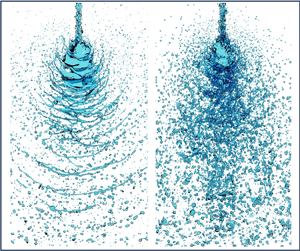Refine listing
Actions for selected content:
1397632 results in Open Access
2024 Pierre Lalive and John Henry Merryman Fellowship in Art and Cultural Heritage Law
-
- Journal:
- International Journal of Cultural Property / Volume 31 / Issue 2 / May 2024
- Published online by Cambridge University Press:
- 15 January 2025, p. 133
-
- Article
-
- You have access
- HTML
- Export citation
Global, regional and national burden of depressive disorders and attributable risk factors, from 1990 to 2021: results from the 2021 Global Burden of Disease study
-
- Journal:
- The British Journal of Psychiatry , FirstView
- Published online by Cambridge University Press:
- 15 January 2025, pp. 1-10
-
- Article
- Export citation
The history of biomarkers in psychiatry: lessons learned, lessons forgotten, lessons rediscovered
-
- Journal:
- The British Journal of Psychiatry / Volume 227 / Issue 1 / July 2025
- Published online by Cambridge University Press:
- 15 January 2025, pp. 437-438
- Print publication:
- July 2025
-
- Article
-
- You have access
- HTML
- Export citation
4-Torsion classes in the integral cohomology of oriented Grassmannians
- Part of
-
- Journal:
- Proceedings of the Royal Society of Edinburgh. Section A: Mathematics , First View
- Published online by Cambridge University Press:
- 15 January 2025, pp. 1-43
-
- Article
- Export citation
Semantic taxonomy, direct compositionality, and unlike nominal coordinations in Korean
-
- Journal:
- Journal of Linguistics , First View
- Published online by Cambridge University Press:
- 15 January 2025, pp. 1-44
-
- Article
-
- You have access
- Open access
- HTML
- Export citation
John Barton, The Word: How We Translate the Bible - and Why It Matters, Penguin Books, London. 2023. pp. 351. ISBN9780141993041. pbk. £10.99
-
- Journal:
- Journal of Anglican Studies , First View
- Published online by Cambridge University Press:
- 15 January 2025, pp. 1-3
-
- Article
- Export citation
Lexical be
-
- Journal:
- Journal of Linguistics , First View
- Published online by Cambridge University Press:
- 15 January 2025, pp. 1-24
-
- Article
-
- You have access
- Open access
- HTML
- Export citation
Dervillite from Jáchymov, Czech Republic: a non-harmonic approach to the refinement of atomic displacement parameters of silver
-
- Journal:
- Mineralogical Magazine / Volume 89 / Issue 2 / April 2025
- Published online by Cambridge University Press:
- 15 January 2025, pp. 257-265
-
- Article
-
- You have access
- Open access
- HTML
- Export citation
Turbulent Takeoff—Hard Landing: State-Airline Relations and the Challenges of Early Commercial Aviation in Iran, 1923–1932
-
- Journal:
- Enterprise & Society / Volume 26 / Issue 3 / September 2025
- Published online by Cambridge University Press:
- 15 January 2025, pp. 1085-1111
- Print publication:
- September 2025
-
- Article
-
- You have access
- Open access
- HTML
- Export citation
Rural electrification, the credibility revolution, and the limits of evidence-based policy
-
- Journal:
- Environment and Development Economics / Volume 30 / Issue 1 / February 2025
- Published online by Cambridge University Press:
- 15 January 2025, pp. 70-81
-
- Article
-
- You have access
- Open access
- HTML
- Export citation
Artificial Intelligence in Predicting Postpartum Hemorrhage in Twin Pregnancies Undergoing Cesarean Section
-
- Journal:
- Twin Research and Human Genetics / Volume 28 / Issue 1 / February 2025
- Published online by Cambridge University Press:
- 15 January 2025, pp. 53-59
-
- Article
- Export citation
Sectoral inflation under fragmentation of information
-
- Journal:
- Macroeconomic Dynamics / Volume 29 / 2025
- Published online by Cambridge University Press:
- 15 January 2025, e69
-
- Article
- Export citation
INS volume 30 issue 9 Cover and Front matter
-
- Journal:
- Journal of the International Neuropsychological Society / Volume 30 / Issue 9 / November 2024
- Published online by Cambridge University Press:
- 15 January 2025, pp. f1-f4
-
- Article
-
- You have access
- Export citation
The morphology and spectroscopy of diamonds recovered from the Prairie Creek lamproite in Arkansas, USA
-
- Journal:
- Mineralogical Magazine / Volume 89 / Issue 3 / June 2025
- Published online by Cambridge University Press:
- 15 January 2025, pp. 307-327
-
- Article
- Export citation
Oriented Temperley–Lieb algebras and combinatorial Kazhdan–Lusztig theory
- Part of
-
- Journal:
- Canadian Journal of Mathematics , First View
- Published online by Cambridge University Press:
- 14 January 2025, pp. 1-43
-
- Article
-
- You have access
- Open access
- HTML
- Export citation
Turbulent atomisation of impinging jets under rising backpressure
-
- Journal:
- Journal of Fluid Mechanics / Volume 1003 / 25 January 2025
- Published online by Cambridge University Press:
- 14 January 2025, A15
-
- Article
- Export citation
Yellowcatite, KNaFe3+2(Se4+O3)2(V5+2O7)·7H2O, the first selenite-vanadate
-
- Journal:
- Mineralogical Magazine / Volume 89 / Issue 3 / June 2025
- Published online by Cambridge University Press:
- 14 January 2025, pp. 421-427
-
- Article
- Export citation
Refining Quinean Naturalism: An Alternative to Kemp’s Stimulus Field Approach
-
- Journal:
- Dialogue: Canadian Philosophical Review / Revue canadienne de philosophie , First View
- Published online by Cambridge University Press:
- 14 January 2025, pp. 1-18
-
- Article
- Export citation
The Rationality of Emotions Across Time
-
- Journal:
- Dialogue: Canadian Philosophical Review / Revue canadienne de philosophie , First View
- Published online by Cambridge University Press:
- 14 January 2025, pp. 1-18
-
- Article
-
- You have access
- Open access
- HTML
- Export citation
Clustering of buoyant tracer in quasi-geostrophic coherent structures
-
- Journal:
- Journal of Fluid Mechanics / Volume 1003 / 25 January 2025
- Published online by Cambridge University Press:
- 14 January 2025, A16
-
- Article
-
- You have access
- Open access
- HTML
- Export citation



